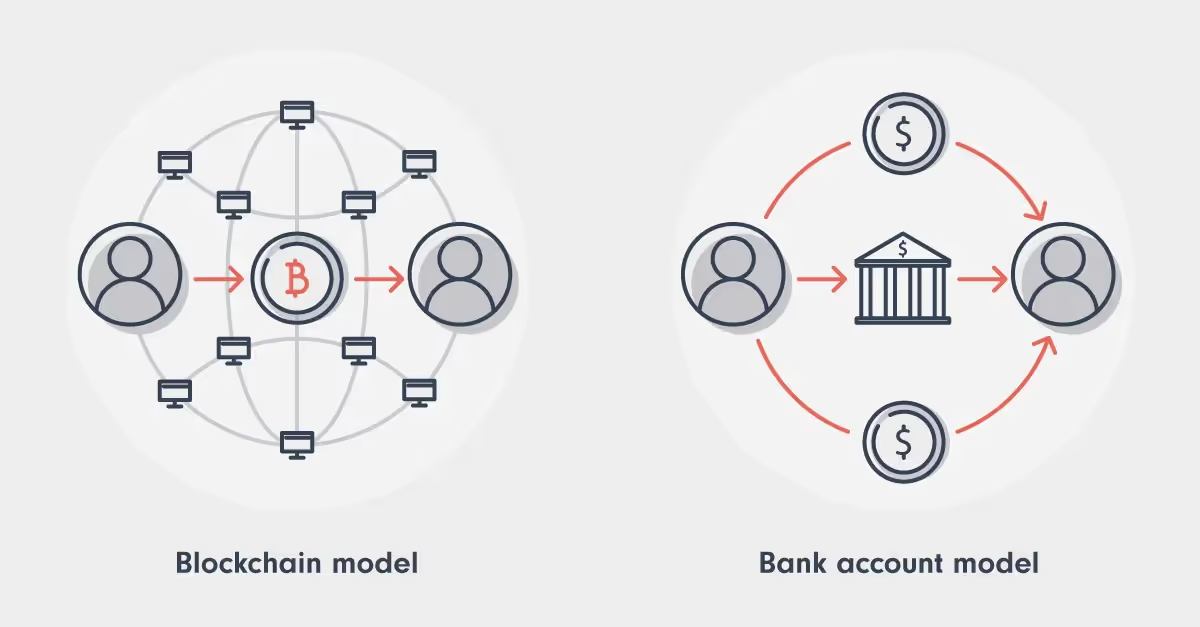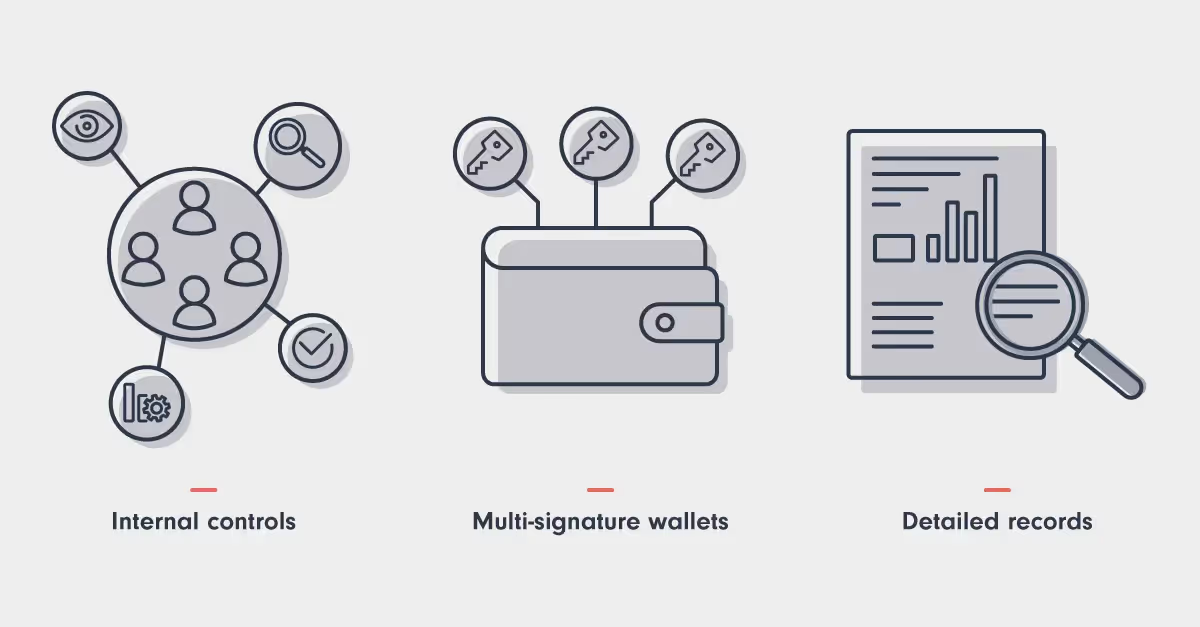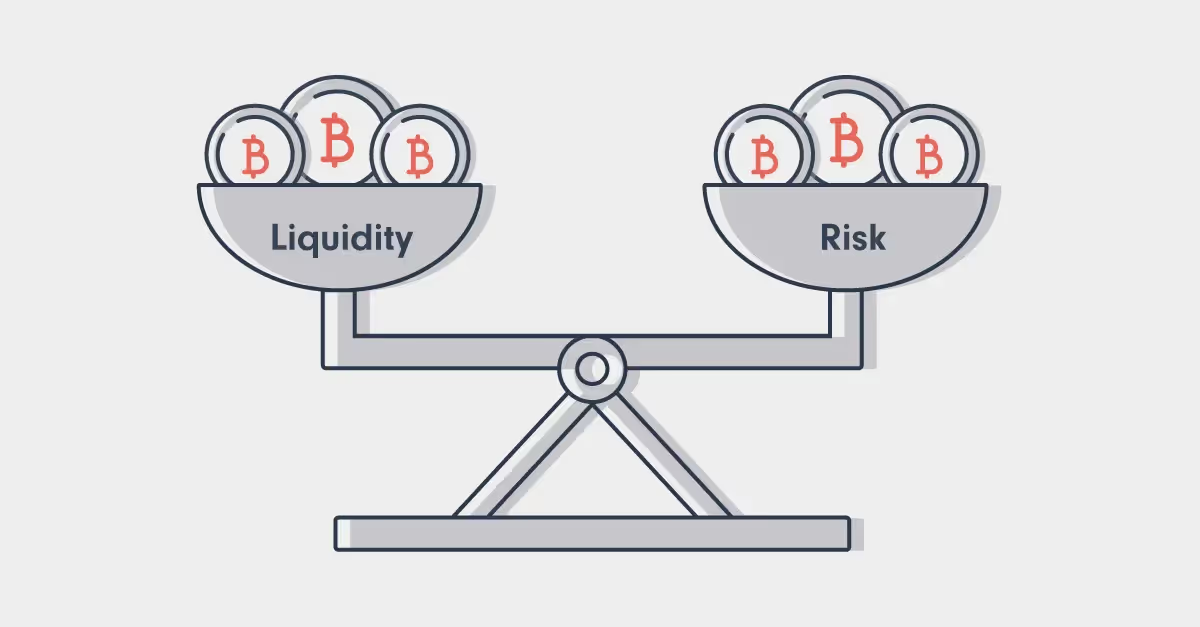
Bitcoin treasury management: a guide for finance teams
Treasury teams across the world are facing the same challenge: how to manage digital assets such as Bitcoin alongside traditional government-issued currencies and other financial instruments.
The challenge becomes more complex when Bitcoin is used in day-to-day business operations as well as an investment asset.
However, with a good understanding of the foundations of Bitcoin treasury management, the perceived barriers to adding Bitcoin to the balance sheet can seem much less daunting.
This article will unpack exactly what is involved for finance teams in the day-to-day management of Bitcoin, from the underlying technology to risk management considerations and best practice.
What is Bitcoin treasury management?
In a traditional finance (TradFi) environment, treasury management is a multi-faceted discipline that can mean different things to different companies.
Fundamentally, a corporate treasurer is responsible for maintaining the cash reserves required for the smooth running of the business. They may also be tasked with managing funding and investment activities, and – depending on the size of the organization – carrying out day-to-day finance operations.
Treasury management as an umbrella term can involve multiple roles beyond that of the treasurer, from the CFO to management accountants, internal audit teams and compliance.
Bitcoin treasury management involves all these core functions, but with the added dimension of being underpinned by blockchain technology.
There are also different accounting and tax requirements for Bitcoin and other digital assets.
Differences between fiat treasury management and Bitcoin
Bitcoin is a blockchain-based digital asset and as such, it has characteristics that make it distinct from fiat (government-issued currencies such as USD), and other financial instruments such as stocks and bonds.
A blockchain is a completely decentralized network that is secured by cryptographic functions.
Bitcoin transactions are created, executed, and confirmed by a network of computers called nodes, and all transactions are recorded in the publicly available ledger of the Bitcoin blockchain.

Bitcoin transactions are validated by a network of computers, instead of a central authority like a bank.
As a result, Bitcoin is a digital currency that cannot be controlled or manipulated by any central authority. This has both benefits and risks, as we shall see.
Benefits of Bitcoin in treasury management
1. Transparency.
Although it may seem paradoxical, blockchain-based systems like Bitcoin are designed to protect the privacy of individual users while at the same creating a public record of every single “on-chain” transaction. This built-in transparency makes it easier for audit and compliance teams to do their jobs.
2. Less counterparty risk.
Removing the reliance on third parties such as banks minimizes exposure to counterparty risk. The dramatic collapse of Silicon Valley Bank in early 2023 was a stark reminder that businesses cannot be complacent about the risk of so-called black swan events.
Even if deposits are eventually restored thanks to insurance or government intervention, companies can face a liquidity crisis in the short to medium-term.
3. A truly borderless network.
Treasury teams within large multinationals face a multitude of challenges when it comes to cross-border payments. Settlement can be delayed by factors such as FX market cut-off times, currency controls at national level and hefty fees via the correspondent banking network. Bitcoin operates without borders or cut-off times, making universal T+0 settlements a reality.
Challenges around Bitcoin for treasury teams
Some of the challenges for treasury teams when it comes to operating with Bitcoin are the same as dealing with fiat currency. We will cover issues such as cybersecurity and liquidity management in more detail below.
On top of this, there is a new set of metrics when it comes to reporting and analysis. These include:
- Bitcoin mining fees (the commission paid to the “miner” who confirms a BTC transaction)
- Tracking the cost basis of each unit of BTC, a key part of financial reporting and tax measures in jurisdictions such as the US.
It is important to understand the extra metadata that a Bitcoin transaction generates and make provisions to record this accurately and consistently.
How to manage a Bitcoin treasury
To take full advantage of the inherent transparency of the Bitcoin network, and to ensure that there is no single point of failure when it comes to controlling funds, an organization needs to have a robust governance structure when it comes to executing and approving payments and generating reports.

User roles and governance
Ideally, the governance structure of a Bitcoin treasury system should map to the same access control measures that exist for the fiat part of the business (assuming that the business is not crypto-native).
This allows for measures such as:
- Dividing the responsibilities for creating and approving transactions
- Different roles and permissions depending on business function
- Operating a multi-signature wallet approach
- A clear “digital paper trail” for each transaction
- A record of all user actions with timestamps
Cash flow analysis
Having a clear overview of the inflow and outflow of funds is essential for cashflow forecasting in fiat treasury management. This is also the case in Bitcoin.
Accurate cash flow analysis relies on data being up-to-date and without the lags caused by manually updating spreadsheets.
This is even more the case with Bitcoin, when tracking the cost basis of a discrete unit of Bitcoin (technically referred to as a UTXO) allows a treasurer to decide when to hold it and when to execute a realized gain or loss.
There are two key functions that any Bitcoin treasury management approach must have to allow this to happen:
- UTXO management at a granular level
- Up-to-date reporting via journal entries and dashboards.
The need for these tools will be determined by the volumes of payments coming into and out of the business. If this is likely to change over time, such tools will allow the business to scale its processes accordingly.
Bulk payments
This is a consideration for businesses looking to make repeat payments of the same amount each month.
The most typical example here is Bitcoin payroll, for companies that wish to pay regular employees all or some of their salary in Bitcoin, either as a value-added incentive or as a streamlined way of operating geographically distributed teams.
Having a bulk approvals mechanism will significantly speed up payment flows of this kind.
Accounting and tax
A comprehensive review of accounting considerations is beyond the scope this article. However, detailed Bitcoin bookkeeping through subledgers provides a solid basis for accounting workflows.
Financial reporting
Beyond accounting and tax, robust financial reporting can support business intelligence research (for example, an analysis of Bitcoin mining fees over time) as well as fulfilling internal and external audit requirements.
TradFi enterprise resource planners (ERPs) such as NetSuite often have specific admin profiles for external auditors, with special access to financial reporting functions without the ability to execute payments.
The Fortris platform is one example of a treasury management system that mirrors this in the context of digital assets.
For more on compliance considerations, read our article SOX compliance for digital asset treasury management.
Risk management in Bitcoin treasuries
As an emerging asset class, Bitcoin carries a number of real and perceived risks. Any risk management strategy needs to be informed by issues such as the following.
Exchange rate volatility
Exchange rate volatility is often cited as the principal risk factor when using Bitcoin as an operational asset.

Despite periods of volatility and price fluctuations, Bitcoin’s value has trended upwards over time, one of the reasons why major corporations such as MicroStrategy and Square have invested in BTC as a long-term store of value.
However, in the short and medium term, Bitcoin can face price fluctuations due to the following factors:
- Supply and demand. By design, Bitcoin has finite supply. Only 21 million bitcoins will ever be mined. This was a deliberate mechanism to prevent price inflation. This inbuilt scarcity can contribute to price fluctuations as demand changes over time.
- Perceived value. Market sentiment can vary widely, depending on factors such as the wider economy, media coverage and events within the crypto ecosystem (such as the FTX collapse).
- Lack of regulatory clarity. With the regulatory landscape in a state of evolution, regulatory uncertainty can cause swings in pricing.
- Technological factors. The supply and demand dynamics can be affected by events such as peaks and troughs in the hash rate (the computational power required to mine and confirm Bitcoin transactions).
A full analysis of possible strategies for managing exchange rate risk is outside the scope of this article, but such a strategy is likely to be multifaceted.
Some practical considerations could include:
- Following best practices when it comes to Bitcoin bookkeeping, to prepare for any future changes in the way Bitcoin must be accounted for.
- Adhering to compliance best practice as it is benchmarked in the fiat world, to ensure regulatory comfort for external auditors.
- Monitor market conditions by investing in expert Bitcoin market analysis, either in-house or outsourced.
- Setting price targets for the buying and selling of Bitcoin, to help mitigate exchange rate fluctuations and allow for more accurate cashflow forecasting.
In addition to these, treasury management tools can help finance teams in the day-to-day payment flow processes. For example, Fortris has an inbuilt exchange rate feature that allows users to “lock in” a flat to Bitcoin exchange rate for a set period when creating a receive order. This makes cashflow forecasting more accurate.
Although dealing with exchange rate fluctuations can seem daunting, it is worth bearing in mind the advantages of Bitcoin over TradFi cross-border payment rails.
For example:
- The messaging and the payment travel together, unlike with systems such as the SWIFT network.
- There are no cut-off times as the Bitcoin network works 24 hours a day and is borderless.
Cybersecurity risk
As with any digital system, cybersecurity is a key concern, both at a corporate security level and in relation to the specific nature of blockchain technology.
Bitcoin wallets, of which an organization may have many, are controlled by the cryptographic key pairs known as public and private keys. Think of these as being equivalent to a bank account number and password. Read more about public and private keys here.
Cyber attackers may attempt to steal Bitcoin from an organization’s wallets by gaining access to private keys, or use phishing or social engineering scams to trick employees into giving them access.
In addition to training and awareness programs for employees, and standard corporate security measures such as multi-factor authentication, it is important to have a well-thought-out key custody policy (more on this below).
Companies should also follow best practice when it comes to maintaining privacy on the blockchain network, such as avoiding wallet re-use (more on this in our article on Bitcoin and anonymity).
Liquidity risk
When it comes to custody of digital assets, there is often a careful balance to be maintained between liquidity and counterparty risk.
This can mean deciding how much Bitcoin to hold in a highly liquid platform such as an exchange, how much to hold with a qualified custodian, and how much to hold in cold storage self-custody.

We cover this in more detail in our article Digital asset custody for enterprise business.
Fraud
As Bitcoin is a decentralized network that is not controlled or overseen by any central authority, there is the added dimension that fraudulent transactions cannot be reversed without the consent of the recipient.
However, there is a flipside to this, which is that Bitcoin is naturally resistant to the type of fraudulent chargebacks that can plague payment rails such as credit card networks.
Just like anti money-laundering and KYC (know your customer) processes in the TradFi world, Bitcoin treasurers can use the services of blockchain-specific analysts in this area, such as Chainalysis.
Internal fraud can be a risk for organizations that have not set up access control measures such as user groups and multi-signature wallets.
Counterparty risk
One of the main areas of counterparty risk that enterprises are exposed to when using Bitcoin is third-party custodians.
There was a surge in interest in self-custody solutions for key storage following the collapse of the crypto exchange FTX in 2022. Self-custody brings its own set of risks and rewards. For more on this, see our checklist for digital asset self-custody.
Bitcoin treasury management with Fortris
As we have seen, Bitcoin treasury management is multifaceted. It has similar challenges to fiat treasury management, but with the added dimension of blockchain technology.
Bitcoin treasury management is a comparatively new field. There are very few operators with a proven track record in executing Bitcoin treasury operations at scale, while mirroring the best practice standards of internal controls, reporting and audit that exist in the fiat world.
At Fortris, we specialize in comprehensive solutions for enterprise and institutional users of Bitcoin. There’s no need to rely on time-consuming processes such as manually updating spreadsheets.
- For CEOs and CFOs, Fortris provides complete top-down visibility into the Bitcoin treasury’s current financial position.
- For corporate treasurers, Fortris removes the guesswork from cashflow forecasting and control of funds.
- For AR/AP executives, Fortris simplifies invoicing and integrates these processes directly into the overall TMS platform.
- For internal and external auditors, Fortris has custom admin roles to support their reporting and analytics requirements.
Plus, Fortris integrates seamlessly with existing TMS and ERP platforms, operating as a detailed subledger to support an organization’s general ledger requirements. Fortris even has a dedicated Oracle NetSuite SuiteApp for seamless integration.
Open your Bitcoin treasury in just 30 days to get started.
Fortris handles digital asset treasury operations for enterprise business.
Want to learn more? Book a demo today.
Fortris handles digital asset treasury operations for enterprise business.
Want to learn more? Book a demo today.
